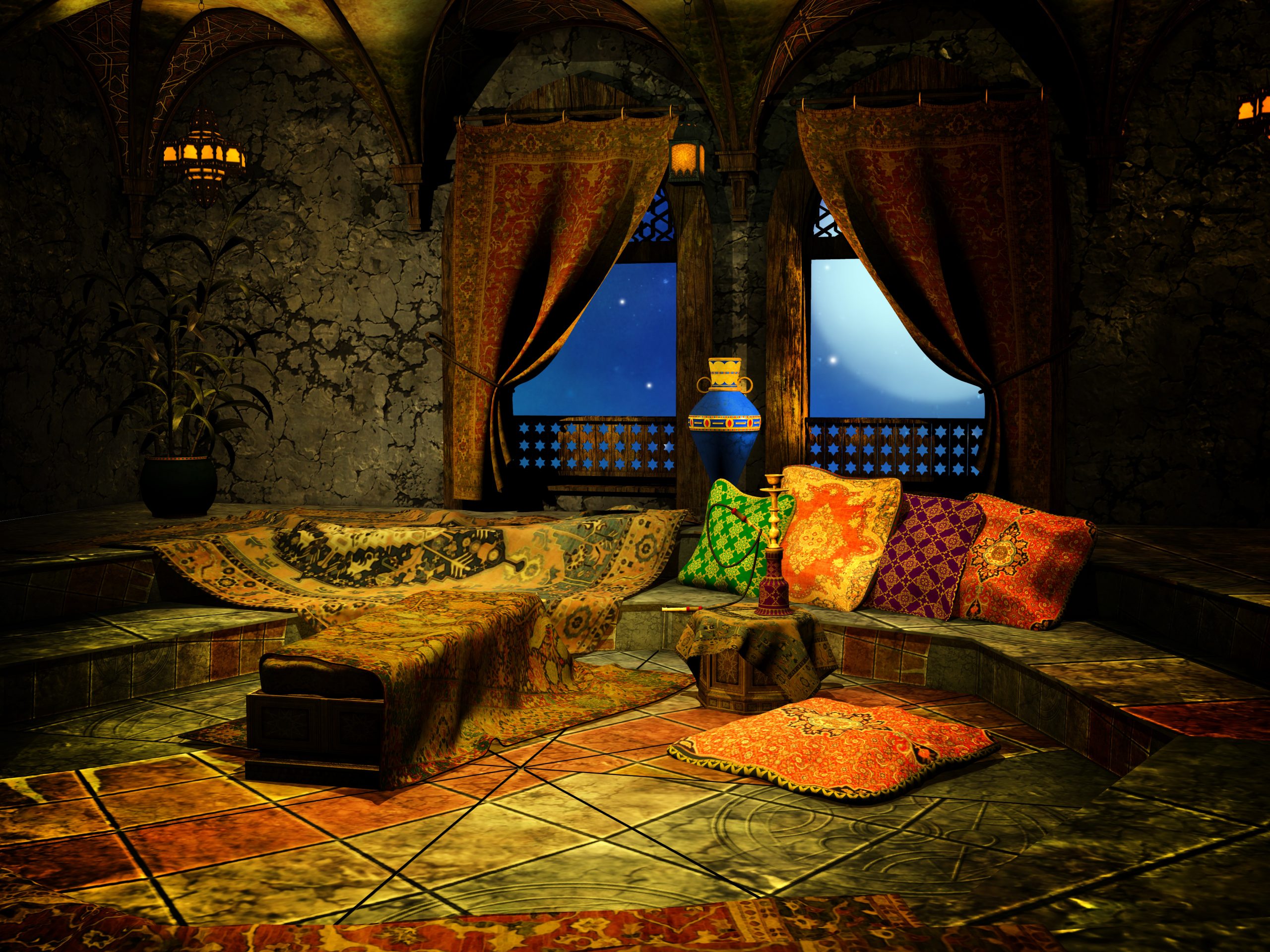What do you know about Arabian Nights? Also called One Thousand and One Nights, this collection of stories dates back centuries. Unfortunately for modern readers, so do most of its translations.
The Ancient Tales of One Thousand and One Nights
The many stories of Arabian Nights are folktales from the Middle East, collected between the 8th and 14th centuries. The stories were rendered in Arabic and have no single author.
Indian, Egyptian, Persian, and more cultures contributed tales to the collection. Taken from literature, folklore, and elsewhere, there is considerable debate as to how the original collection of stories was chosen.
Some of the most well-known stories were not even part of the original version. Tales such as Aladdin’s Wonderful Lamp and Ali Baba and the Forty Thieves were added in a translation by Frenchman Antoine Galland in 1704.
The stories resulted in much controversy over the centuries. European translations were mired in politics and the cultural mores holding sway at the time of translation.
The Framework of Arabian Nights
These many and varied stories are presented in a framework to tie them together. Ingenious in both form and function, the framing device is also a story. Scheherazade is a young woman who volunteers to be the bride of Shahryār.
This is a dangerous choice, as the king has taken to marrying virgins and murdering them the following morning. He is a man desperately trying to avoid being disgraced by an unfaithful wife.
Scheherazade is the last virgin available. In order to postpone her fate, she begins weaving tales for the king. The tales are enchanting and she leaves them unfinished each night. The king allows her to live another day to see how each story ends.
Arabian Nights is many stories wrapped into one.
The Translation of Arabian Nights
The folktales that make up the core of Arabian Nights are ancient. The translation history of the work is remarkable and complex. Early Persian and Arabic versions paved the way for the European translations of the 18th and 19th centuries.
Each translator brought with him cultural biases that changed the stories. Some were edited to remove content considered lewd. Other changes were more subtle, revealing the worldview of the translator.
The one thing that stands out among the many English translations is that they were all done by men. A 2008 version by the husband-and-wife team of Malcolm and Ursula Lyons took the first step in including women in translating One Thousand and One Nights.
A New Translation
Yasmine Seale is a French-Syrian poet and translator who will give these ancient stories their first English translation by a woman. Seale chose to base her new work on the 1885 translation by Englishman Sir Richard Francis Burton.
You may wonder why we need so many translations of a single set of stories. That’s a fair question. There is, as always, disagreement on many fronts. What are the original stories? Who compiled them? What should be included in modern versions?
When translating ancient works, these types of unknowns are inevitable. They are almost as inevitable as history’s translators bringing their own worlds into their translations.
Seale endeavors to bring back the women of Arabian Nights. The Galland additions, once thought to have been penned by the translator himself, were in fact part of a larger collection of stories written by Hanna Diyab. Galland did not include the stories in which women were the protagonists.
There are also stories in which the female characters have been stripped of their vitality and complexity. Seale gives these characters back their wonder and joy, allowing the stories to be richer and fuller.
Seale will also attempt to address the layers of cultural construct inflicted upon the stories over the centuries. Allowing the stories to shed racism and sexism not present in the originals lets them breathe. The characters are unencumbered by centuries of misunderstanding and manipulation.
As the first woman to complete an entire translation of Arabian Nights in English, Seale takes on a mighty task. Not only is she translating one of the world’s most well-known works, but she is also doing so with purpose.
Despite One Thousand and One Nights relying entirely on a woman to form its framework, it has been too easy to erase the women in the tales themselves. Bringing women to the fore will change how English readers see the characters and interpret the folklore.
A new translation of an ancient work, especially one that taps into current cultural shifts, will certainly bring controversy. Seale’s work will bring Arabian Nights back into the collective consciousness.
As we discover the women long missing from these stories, we will also gain a greater understanding of the cultures from which they arose. This contemporary translation will allow English-speaking audiences to appreciate the richness of the stories in a new way.






